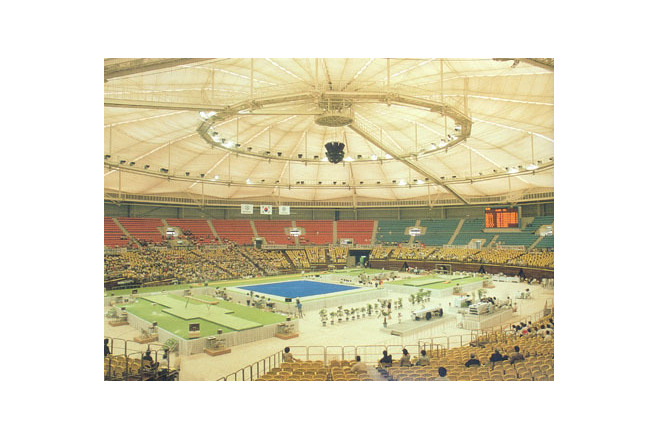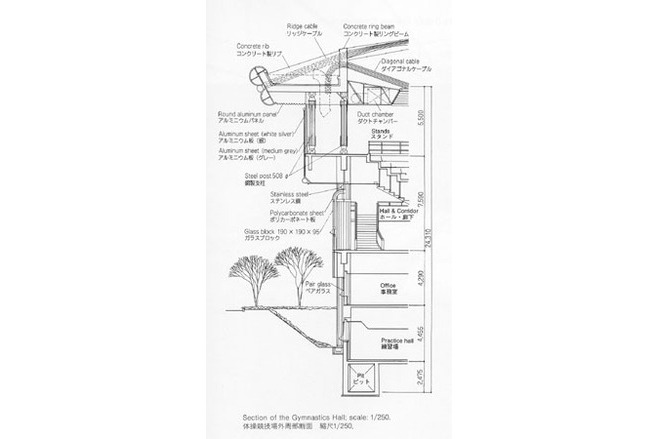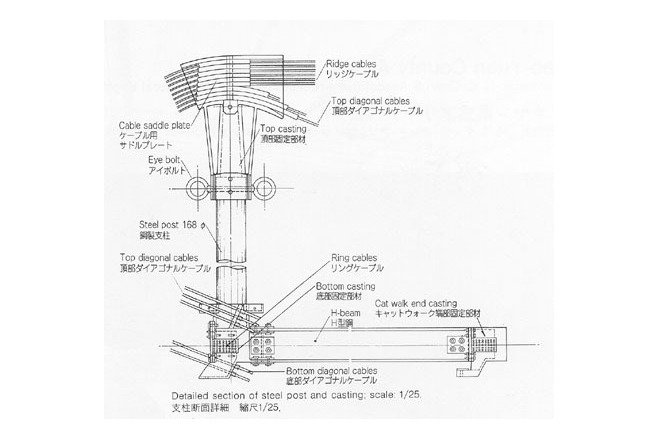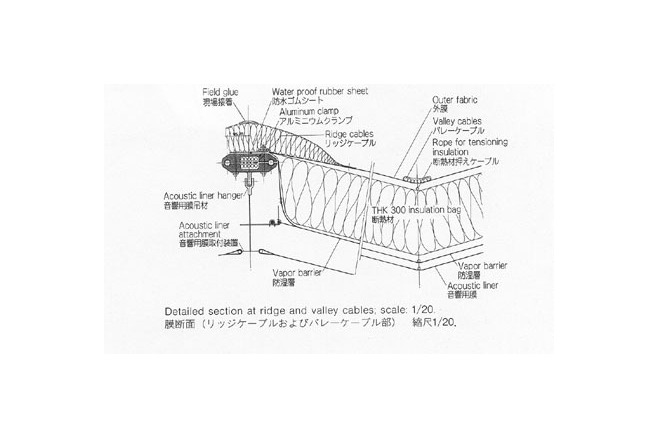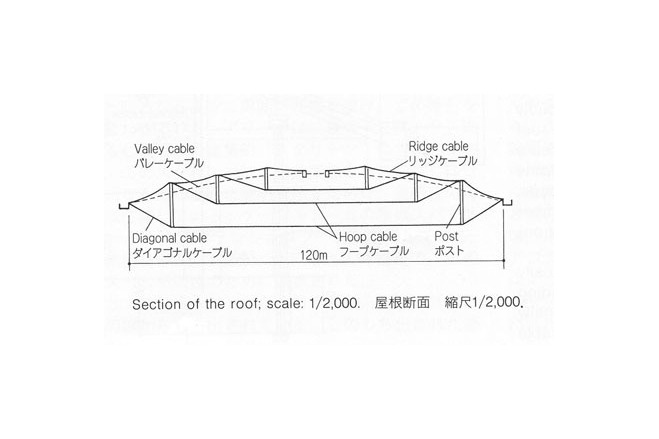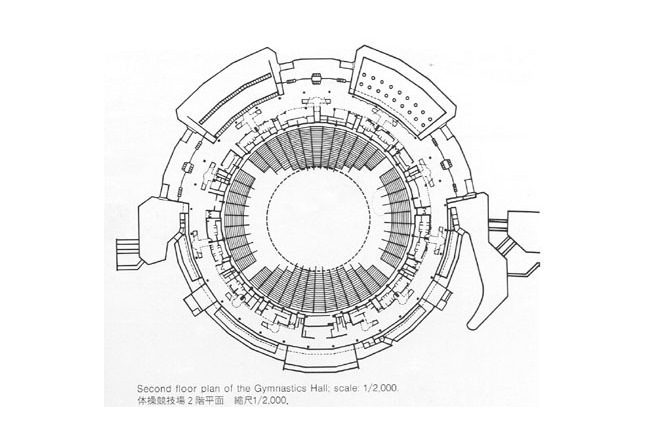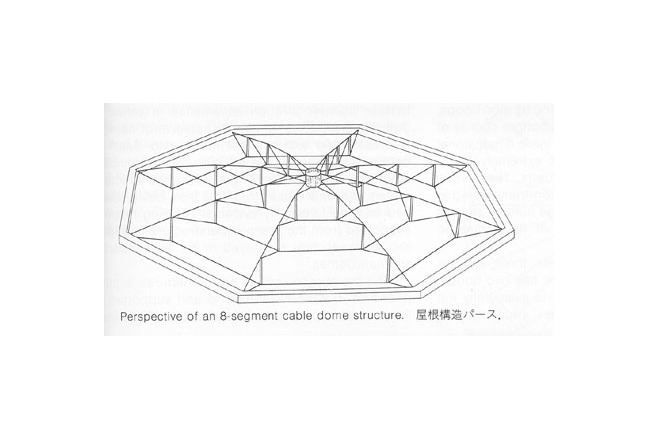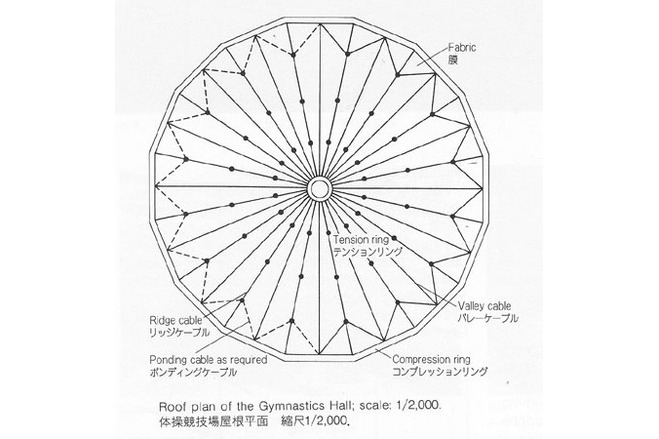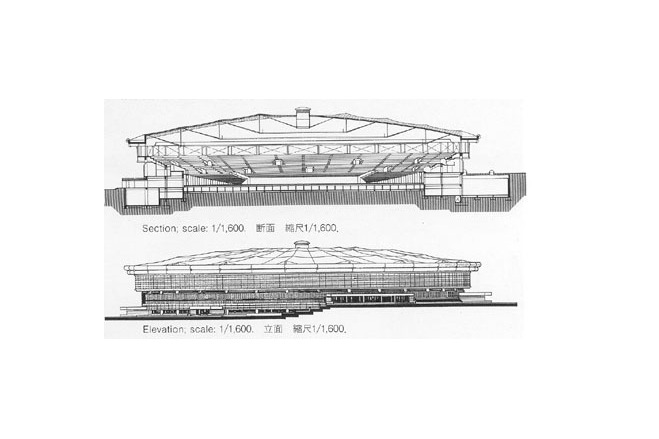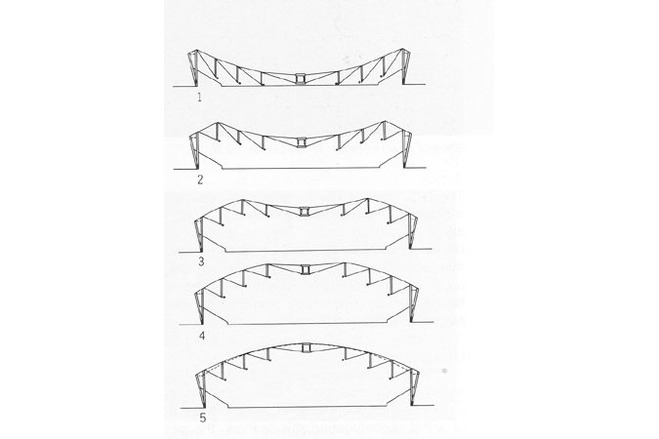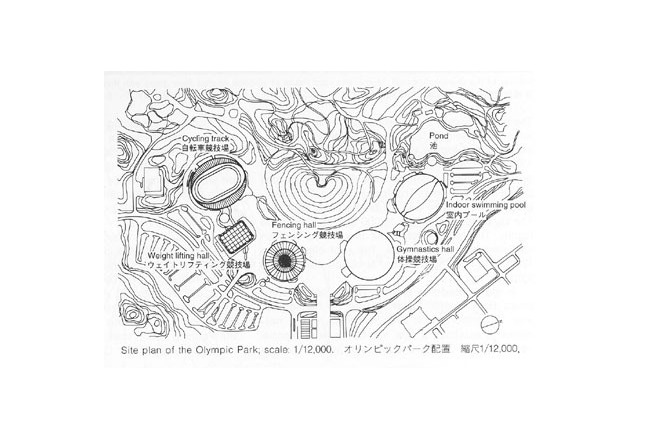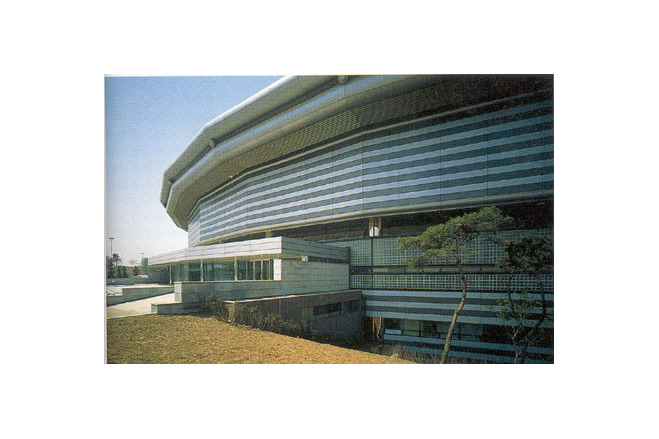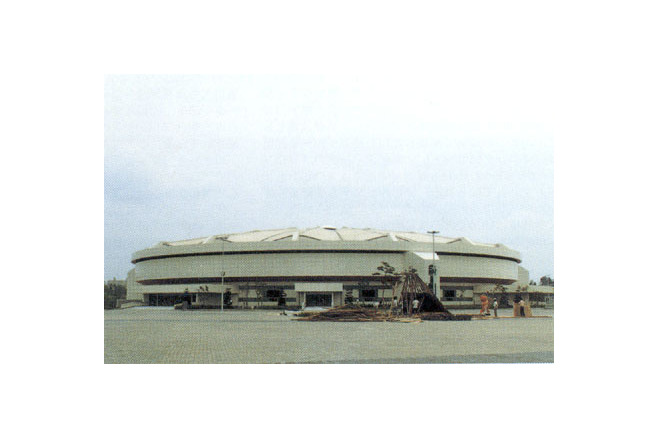Seoul Olympic Gymnastics Hall and Fencing Hall
General information
-
Location address
Seoul
-
Location country
Korea, republic of
-
Function of building
Stadia
-
Degree of enclosure
Fully enclosed structure
-
Climatic zone
Temperate - cold winters and mild summers
-
Number of layers
mono-layer
Description
The Gymnastics Hall is the largest of the five stadiums in Seoul Olympic Park which were used as the main facility for the 1988 Olympic games.The gymnastics Hall developed a structural system that had never before been built: the world's first erected self-supporting "CABLE-DOME" fabric roof. The essential concept of the cable dome is making a continuous tension throughout the roof with tension cables and discontinuous compression posts.The ultra-lightweight cable dome system opened a new vision of fabric structures by eliminating the operational demands of air-supported structures, such as the need for mechanical systems which supply to provide possible pressure to avoid deflation of the roof by wind and snow.The prime mover behind the cable dome in Korea was Kim Soo-Geun (President of Seoul-Based Architectural Firm, Space Group of Korea, at the time) deceased in 1986. Even though there were many concerns about the technical feasibility of the cable dome that had never before been built, he and the project architect, Ryu Choon-Soo (partner of Space Group of Korea at that time, now chairman of Beyond Space Group) convinced Seoul City and the Seoul Olympic Organizing Committee with the basic concepts of first; the commitment that the Gymnastic Hall should continue the tradition of technical innovation in Olympic architecture.Second; A soft and low profile design of the roof is required to harmonize with the natural surroundings of the park: the mongchon earth fort of the Paekje dating back to 3 AD.Third: Post-Olympic use of the Hall would be (and is) mostly during the daytime, and the design components of the building were carefully coordinated to achieve visual coherence of the ultra-modern technology while retaining the characteristics of traditional Korean aesthetics.Flexible configurations and seating capacities can be achieved for a variety of sports venues in the Gymnastics Hall through the use of expandable and retractable seating systems at floor levels(Ryu Choon-Soo, Beyond Space Group)
Description of the environmental conditions
The first tensegrity type domes realized in the world were these Geiger Cabledomes covering the Gymnastics and Fencing venues for the Games of the XXIV Plympiad in Seoul Korea. While Geiger first proposed this system for the Florida Suncoast Dome (now Known as Tropicana Park) in St. Petersburg, Florida, these two structures were built first. The Gymnastics Hall is a 15000 seat multipurpose facility. The hall's Cabledome is covered with an insulated fabric membrane. The roof clear spans 120 m. The Fencing Hall roof structure clear spans 93 m.In the Cabledome system, David Geiger combined Buckminster Fuller's ideas of "tensegrity" and "aspension" with experience in tensile networks to establish a new triangulated spatial network. The primary structural system of the Gymnastics and Fencing Hall roofs are made up of 16 radial cable truss-like ribs. These are comprised of ridge cables, diagonal cables and compression struts. The bottoms of the truts at a given radius are all interconnected by concentric tension hoops, which replace what would be the bottom chords of the cable trusses. This creates a three dimensional cable and strut network which is extremely effective in dissipation of localized loads. The unique aspect of the system is that it is non-triangulated in space. The structure resists a large number of load configuration modes by virtue of its geometric rather than extensional stiffness.The Gymnastics structure has three tension hoops while the Fencing structure has two hoops. The Fencing cable/strut network is essentially the inner 3/4 size of the Gymnastic structure. The cabling in each structure is made up of bundles of 7 wire prestressing tendons. The network nodes are cast steel. Continuity of the tendons is maintained to maximize reliability by minimizing tension transfer through assemblies in series. In both structures, the tensegrity cable/strut network is prestressed within a perimeter ring beam of reinforced concrete. The reliance on a continuous perimeter compression ring to close the structural system prevents these structures from being classified as pure tensegrity systems. The ring beam is supported from the arena superstructure in a fashion similar to that employed in the air-supported stadium domes. The membrane roof of both structures is comprised of 16 panels clamped to and supported by the roof structure's radial ridge cables. These panels are triangular in plan with one vertex at the center tension ring and a base at the perimeter ring beam. The panels were installed following completion of the cable/strut network and are prestressed by tensioning the radial valley cables which bisect each panel in plan. Both roofs are thermally insulated and translucent. The use of tensioned fabric for these roofs was appropriate for its translucency and low mass, however the structural system can accept traditional "rigid" roof construction.(David M. Campbell, Geiger Gossen Hamilton Liao Engineers)[Membrane Designs and Structures in the World, Kazuo Ishii, p212-215]
Material of the cover
-
Cable-net/Fabric/Hybrid/Foil
Cable
Main dimensions and form
-
Total length (m)
120
Duration of use
-
Temporary or permanent structure
Temporary
-
Convertible or mobile
Convertible
-
Design lifespan in years
00-05
Involved companies
Editor
-
Editor
Marijke M. Mollaert


